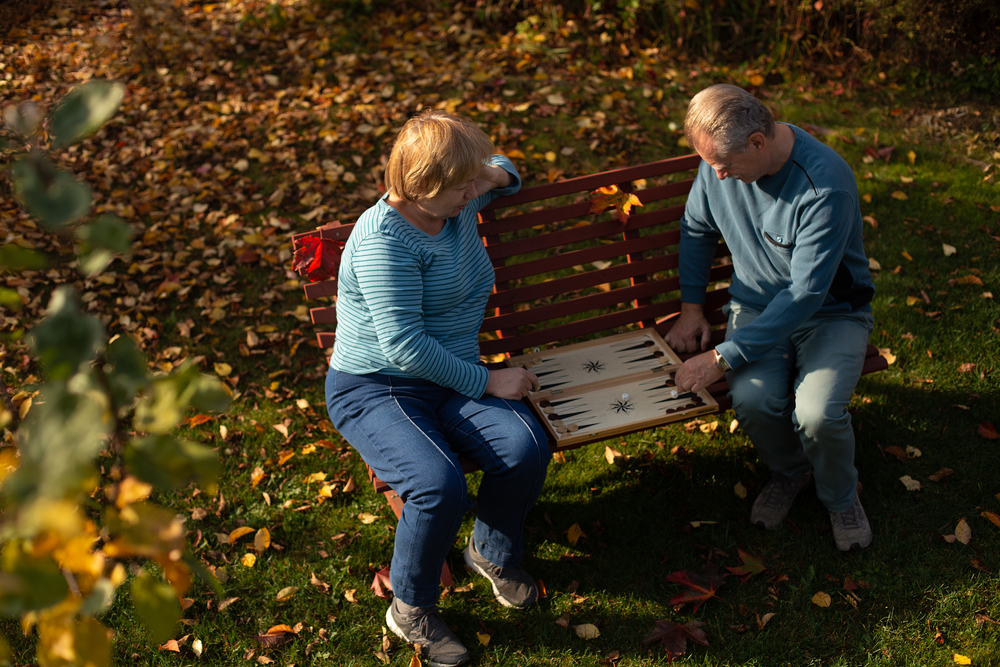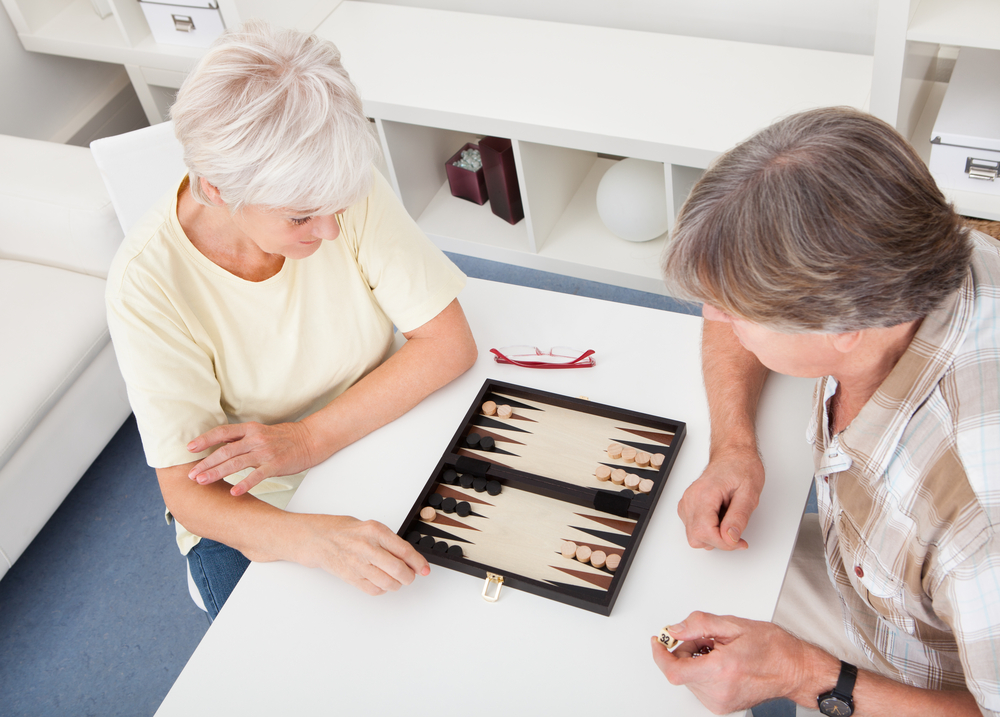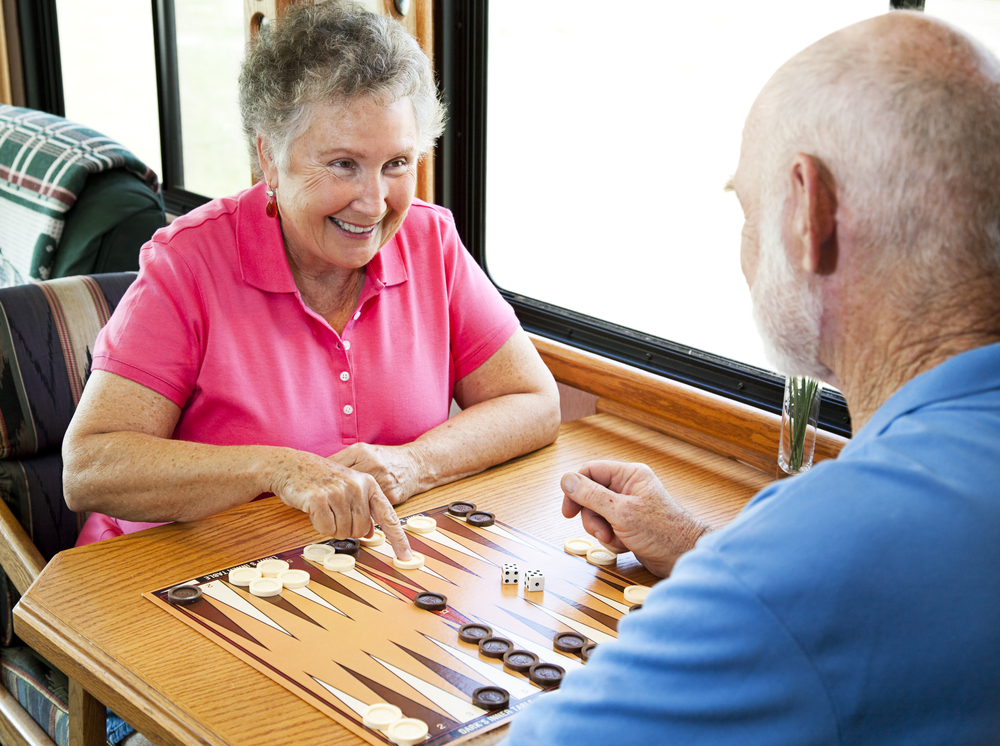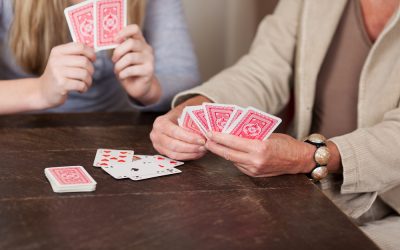Backgammon is an ancient board game that has been played for thousands of years. It is a game of strategy and luck that can be enjoyed by people of all ages. It is an excellent game to introduce to seniors who are looking for an engaging activity that can help them stay mentally active and socialize with others.
Bringing backgammon to your senior living facility is a fantastic way to encourage your residents to stay active and engaged. It can be played with two or more players and is a great way for residents to interact with one another.
In this post, we will discuss the history of backgammon, the benefits of playing the game, and provide step-by-step instructions on how to play backgammon.
History of Backgammon
Backgammon is believed to be one of the oldest board games in the world, with origins dating back more than 5,000 years.
The game has been played throughout history in many different cultures, including ancient Greece, Rome, and Persia.
The modern version of the game is based on the ancient Roman game of “Duodecim Scripta,” which means “twelve lines” in Latin.
The game became popular in Europe during the Middle Ages and was eventually introduced to the United States in the 17th century.
Today, backgammon remains a popular game around the world, played by millions of people in both casual and competitive settings.

Benefits of Playing Backgammon
Playing backgammon offers a wide range of benefits, including mental stimulation and social interaction. It is an excellent way for seniors to exercise their cognitive abilities, including problem-solving, critical thinking, and memory. The game also helps to improve hand-eye coordination and spatial awareness.
Backgammon is a social game that can help seniors build new friendships and strengthen existing ones. It is a game that can be played at all skill levels, making it an inclusive activity that everyone can enjoy.

How to Play Backgammon
Backgammon is a two-player board game played on a specially designed board. The game is played using 15 checkers for each player and two dice.
The objective of the game is to move all of your checkers around the board and off the board before your opponent does the same.
Each player begins with their checkers arranged in a specific way and they must move their checkers according to the rolls of the dice.
Players can block their opponent’s moves by landing on a point that has two or more of their opponent’s checkers on it, effectively creating a barrier. Additionally, players can capture their opponent’s checkers by landing on a point where their opponent has only one checker.
The game requires a combination of strategy, skill, and luck, as players must make strategic decisions about where to move their checkers based on the roll of the dice. The game continues until one player successfully moves all of their checkers off the board, or until one player forfeits the game.
Step-by-Step Guide to Playing Backgammon
Step 1: Setting Up the Board
To set up the board, each player places two checkers on their 24-point, three checkers on their 8-point, five checkers on their 13-point, and five checkers on their 6-point. The board should be oriented so that each player’s home board is on their right side.
Step 2: Rolling the Dice
The game begins with both players rolling one die each. The player with the higher number goes first and uses the two dice to move their checkers.
Step 3: Moving the Checkers
Players take turns rolling the two dice and moving their checkers accordingly. The numbers on the dice indicate how many points the player can move their checkers. For example, if a player rolls a 4 and a 3, they can move one checker four points and another checker three points, or they can move one checker seven points. The checkers are always moved in a counterclockwise direction around the board.
Step 4: Hitting and Entering
If a player lands on a point where their opponent has only one checker, the opponent’s checker is “hit” and sent to the bar in the middle of the board. The opponent must then “enter” their checker back onto the board and move it according to the roll of the dice.
Step 5: Bearing Off
Once a player has moved all of their checkers into their home board, they can start bearing them off the board. The checkers are removed from the board according to the roll of the dice. For example, if a player rolls a 2 and a 1, they can remove one checker from their 4-point and one checker from their 3-point. The first player to bear off all of their checkers wins the game.
Step 6: Doubling
Players can also double the stakes of the game if they think they have a strong position. Doubling can only occur at the start of a player’s turn, and once the stakes have been doubled, the opponent has the option to accept or decline the double. If the opponent declines, they forfeit the game, and the stakes are doubled.
You can even experience playing backgammon online yourself!
Tips for Playing Backgammon
- Keep your checkers protected – Try to keep your checkers in groups of two or more to minimize the chances of them getting hit by your opponent.
- Use your doubles wisely – Doubling can be a powerful tool, but it can also backfire if you don’t have a strong position. Be strategic about when you choose to double.
- Look ahead – Backgammon is a game of strategy, so it’s essential to think several moves ahead. Consider the potential moves your opponent may make and plan your strategy accordingly.
- Pay attention to your opponent’s moves – By paying attention to your opponent’s moves, you can gain insight into their strategy and adjust your gameplay accordingly.
- Practice, practice, practice – Backgammon is a complex game, so the more you play, the better you’ll get. Consider joining a backgammon club or finding other players to practice with.
Bring Backgammon to Your Senior Living Facility
If you’re interested in bringing backgammon to your senior living facility, there are several steps you can take to get started:
- Find interested players – Speak with your residents to see if there is interest in playing backgammon. You can also post flyers or hold an information session to gauge interest.
- Obtain backgammon boards – You will need to purchase backgammon boards and sets of checkers for your residents to use. You can find these online or at game stores.
- Host game nights – Set up a regular game night where residents can come together to play backgammon. You can also consider hosting tournaments or other events to encourage participation.
- Provide resources – Consider providing resources for residents who are new to the game, such as instructional videos or beginner’s guides.
- Encourage socialization – Backgammon is a social game, so encourage residents to play with one another and build new friendships.

Backgammon is an engaging and entertaining game that can be enjoyed by people of all ages, including seniors. It offers a wide range of benefits, including mental stimulation and social interaction, making it an excellent activity for seniors living in senior living facilities.
By following these steps, you can introduce backgammon to your senior living facility and provide your residents with a fun and challenging activity to help them stay mentally and socially active.
About MyCorwin
Since 1993, MyCorwin has delivered the most impactful activity calendars for seniors in nursing homes, memory care, senior living, assisted living or independent living facilities.
We start with the most user-friendly online custom calendar builder. You won’t need any special computer skills or programming knowledge to easily learn to use it in just minutes, as MyCorwin is compatible with both PC and Mac computers and tablets as well as all modern browsers.
Simply log in, submit your activities and schedule, then log out to customize your calendar at your convenience! Our state-of-the-art activities calendar system saves your work so you can pick up right where you left off. We make creating your own custom calendar a breeze with three easy steps.
Learn more about our activity calendar and senior living newsletter services or book an appointment to discuss your publishing needs.




0 Comments